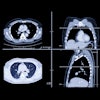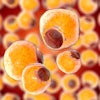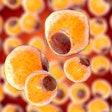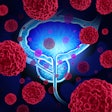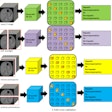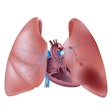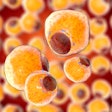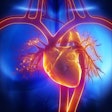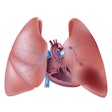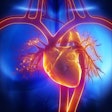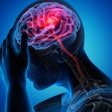As the number one cause of death in the U.S., heart disease continues to attract tremendous interest in the medical community, particularly in the search for new screening techniques for preclinical patients who may be at risk for heart attack.
Among noninvasive techniques, coronary calcium screening with both multidetector-row spiral CT (MDCT) and electron beam CT (EBCT) are effective predictors of future coronary events, according to studies presented at the recent International Symposium on Multidetector-Row CT in San Francisco.
"Coronary artery disease is like an iceberg. The documented part is [visible], while most of the disease is underwater, as asymptomatic arteriosclerosis," said Dr. Joseph Shemesh, a cardiac researcher at the Sheba Medical Center in Tel-Aviv, Israel. "The new submarines, the wonderful CT machines, take us underwater to look at the coronary artery walls." Similarly, calcium deposits often indicate the presence of hidden soft-plaque deposits, he added.
"Whenever you see a burden of calcified arteriosclerosis, the burden of uncalcified soft plaque is five times higher," Shemesh said.
In nearly eight years of looking at coronary artery disease with a dual-slice scanner (Twin-Marconi), Shemesh said his research team had clearly demonstrated the value of coronary calcium scoring in clinical practice. Thanks to fast scanning times, ECG triggering and gating techniques, many expensive and sometimes invasive diagnostic procedures have been replaced by a simple 10-minute CT scan and calcium scoring, Shemesh said.
A study completed in 1999 broke new ground in showing the prognostic value of the presence of coronary calcium in predicting future coronary events (Circulation Supple I (As) 1999;100:I-535), Shemesh said. Using Cox regression analysis, the Israeli researchers found that among 456 high-risk asymptomatic patients, those with coronary calcium (TCS>0) were 3.5 times more likely to develop a significant coronary event within three years. In addition to its predictive value, the technique is useful for stratifying asymptomatic hypertensive patients, Shemesh said.
Conversely, an earlier study showed the negative predictive value of calcium scoring. The absence of calcium on CT was predictive of angiographically normal coronary arteries in elderly women with subacute chest pain and/or abnormal exercise test with 61% sensitivity, 100% specificity, and 85% accuracy, Shemesh said (Radiology 1996; 199: 665-668).
Coronary calcium is also a reliable method of distinguishing ischemic from non-ischemic cardiomyopathy, with sensitivity of 100%, specificity of 92%, and accuracy of 97%, he said (Am J Cardiol 1996; 77: 191-194).
In other studies, Shemesh and colleagues showed CT's value in diagnosing new arteriosclerotic lesions in transplant patients, and in tracking the progression of coronary calcium deposits. He cautioned that because calcium scores vary widely between scanners, patients should be tested and retested on the same machine.
Even more important, CT angiography with calcium scoring is appropriate only in populations at high risk for coronary arteriosclerosis, he said, not in the general population, which can be screened initially with other useful tools such as stress tests. The test is equally inappropriate for acute symptomatic patients, he said.
Commenting on a companion technique, electron beam CT (EBCT) angiography, the American Heart Association and the American College of Cardiology also urged cautious patient selection in a joint statement issued earlier this month. While EBCT can be useful for stratifying high- and moderate-risk patients, the report said, it should not be used to screen asymptomatic patients unless other risk factors are present. The report concluded that there is not sufficient evidence to recommend widespread use of EBCT at this time.
However, Shemesh said that there is substantial evidence pointing to CT's diagnostic value in the right subset of patients. Moreover, the negative predictive value of CT angiography with calcium scoring can effectively rule out arteriosclerosis, he said.
"The big advantage to CT angiography is that all diagnostically relevant questions can be answered, it's much less expensive, it's relatively simple, and we get far better spatial resolution," he said.
In another presentation, Dr. William Stanford, a professor of radiology at the University of Iowa College of Medicine in Iowa City, discussed the clinical experience in coronary calcium imaging with electron beam CT, single-detector spiral CT and multidetector-row spiral CT.
Since the early 1990s, significant clinical experience has shown electron beam CT to be effective for coronary calcium imaging, and the technique may yield better image detail and fewer motion artifacts than single-row spiral CT scanners, he said. Surprisingly, he said, EBCT did better than spiral CT in imaging very small deposits, i.e. those in patients with calcium scores of less than 10.
Multidetector-row spiral CT scanners offer the advantages of rapid image acquisition and superior spatial resolution, he said, but come with a price: about 2.3 times the radiation exposure of electron beam scanners for a typical calcium screening protocol. An advantage over single-detector scanners is their ability to image patients in a single breath-hold.
Although research directly comparing spiral to electron beam CT remains sparse, Stanford noted a study in the American Journal of Roentgenology (AJR 2000; 174:543-547) that found a 96% correlation between the techniques for identifying coronary calcification.
Stanford concluded that electron beam scanners, single and multidetector-row spiral CT all do a good job of imaging calcium, and "are here to stay." Rather than belaboring the question of which machine works best, programs and research to identify and follow at-risk patients should be expanded, he said.
"If the individual at risk for a cardiac event can be satisfactorily identified, there are powerful treatment modalities that tend to lessen the impact," he said.
Other important goals are validating calcium screening as a predictor of cardiac events, and further exploring triggering sequences and threshold levels to optimize imaging protocols, Stanford said.
By Eric Barnes
AuntMinnie.com staff writer
July 12, 2000
Related Reading
EBCT outperforms stress testing in detecting coronary artery disease, July 3, 2000
Let AuntMinnie.com know what you think about this story.
Copyright © 2000 AuntMinnie.com
